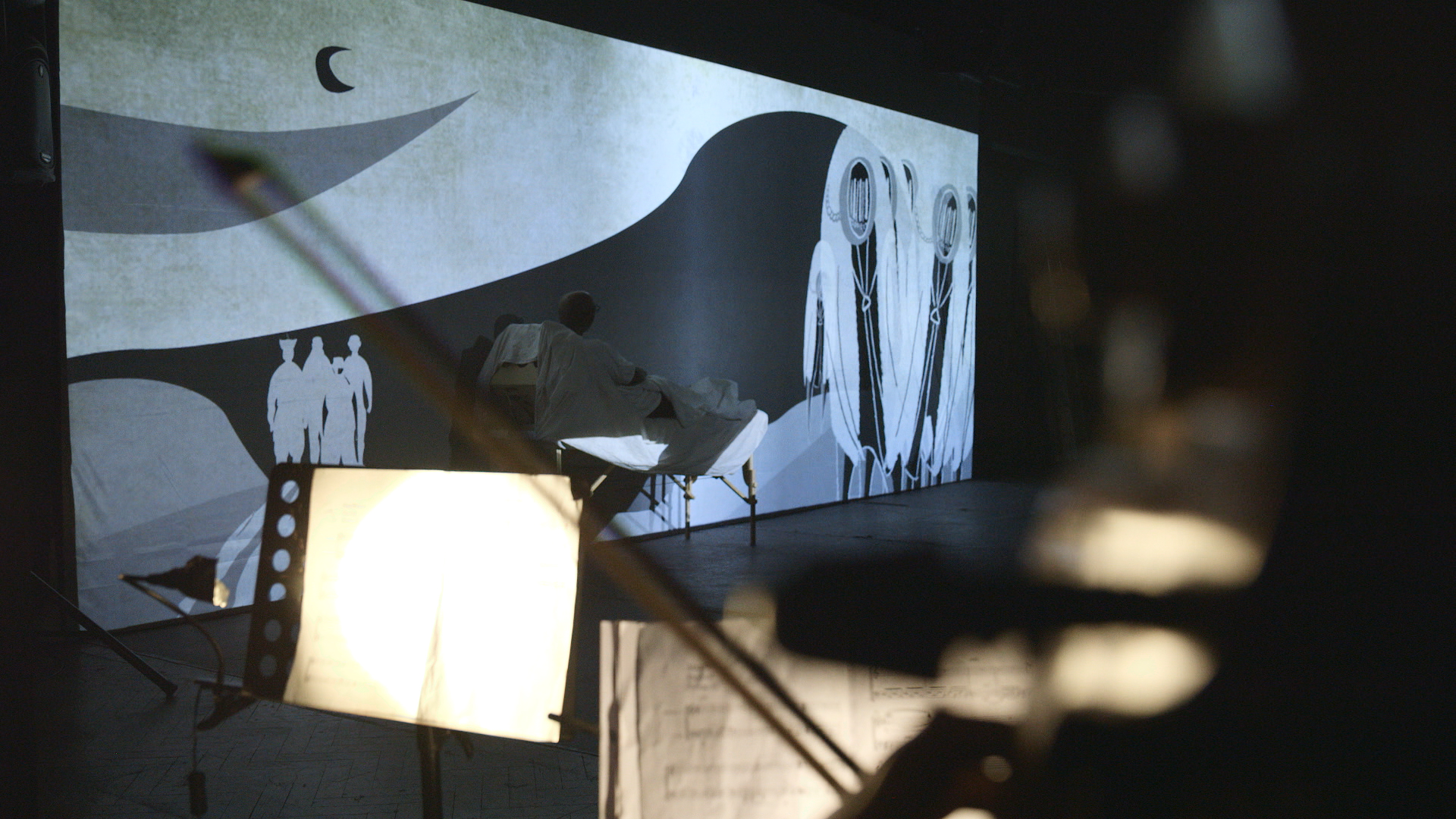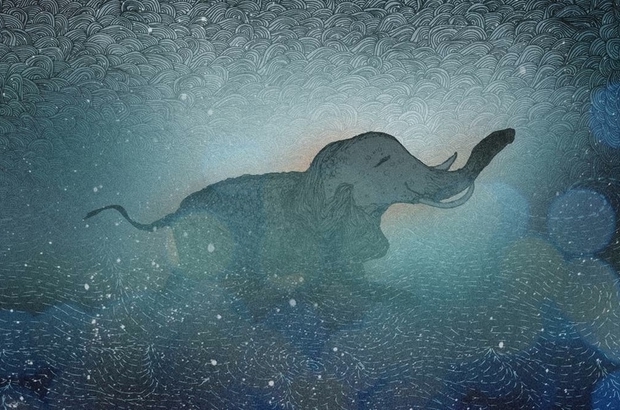ROBERT STEVENS reviews The Fall at the Acklam Village Market.
EmpathEyes’s The Fall is a new multimedia production, based on Tarsem Singh’s 2006 film of the same name, that depicts a dark yet moving relationship between an elderly man and a small girl, adopting a fresh take on the age-old theme of storytelling. Childish innocence and mental illness are combined as Roy (Robert Rowe), lying in a hospital bed following a failed suicide attempt, depressed and tired of life, befriends Alexandria (Keira Jozana) whom he convinces to supply him with painkillers aiming to overdose. In return, he tells her a long, epic tale, withholding instalments of his story until she gives him more drugs. Animations are projected onto an eight-metre wall behind him, bringing the narrative to life and merging the worlds of magic and reality. With Alexandria herself featuring solely as a video-projection in this display, and with a live orchestra accentuating the unravelling tale, The Fall aims high in its efforts to transport an audience into the fantastic story world. Ambitious in this attempt at tackling traditional themes and the experience of mental illness, this production of The Fall struggled to make the emotional impact it required and to live up to those ambitions.

Despite its exciting effects, Roy’s tale was rather hard to follow and often incoherent. Merging the historical with the fictional, the narrative recounted the journeys of five heroes, presenting mystics and villains inhabiting a desert island and including such characters as Charles Darwin, his shy monkey Wallace, and a spiritual guru. This excess of content meant the story was erratic and sometimes lacked a sense of direction. Its attempts to incorporate so many aspects of fantasy and create such a broad universe in the forty minute run time meant that no single area of the story was satisfactorily dealt with or developed. The story, quite subtly, offered itself as an allegory of Roy’s depression – becoming more cynical as Roy grew more desperate in real life. However, Roy’s tale of heroism and bravado felt like a tangential aside to the play’s exploration of the often sinister relationship between the world-wearied man and the naïve young girl, and as such the story was never quite substantial enough to wholly immerse the audience.

The integration of video footage into stage drama is a new and absorbing device, and one that should be used carefully, only when adding something significant to the experience. In the case of The Fall, the choice to have a prominent character projected rather than live-acted was certainly innovative and helped create a sense of Roy’s detachment from reality, but it was left undeveloped and seemed somewhat unjustified. Grainy and pixelated, the aesthetic style of the animation did capture the melodrama of a children’s story, yet the movement of the drawings felt half-finished and didn’t match the speed and grandeur that Roy’s tale demanded.
Where the visual aspect of the production fell short, the live orchestra really complemented and energised the performance. A joy to listen to and greatly emotive particularly in the singing, the quality of this aspect of the play was often at odds with the rest of the production, for example when the choice of song felt overly dramatic when set to a narrative that itself somewhat lacked depth.
The Fall perhaps aimed too high and never quite managed to secure the basic structure on which its grand aspirations were formed. Sadly the show struggled to convey its narrative in a fully engaging way. However, the complexity and ambition of this project, linking animation and live music with reality, as well as balancing a densely layered narrative to produce such a multi-faceted work is certainly admirable.
EmpathEyes’ The Fall ran from 17th – 19th March. Find more information here.
Featured image courtesy of EmpathEyes.





